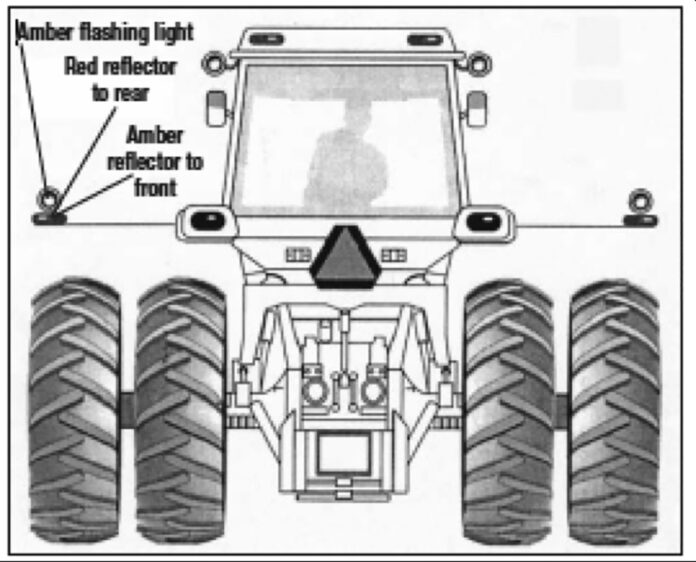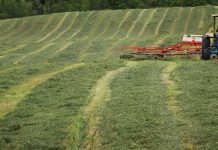With the amount of April showers we’ve had this year, we should be knee deep in May flowers. Normal precipitation amounts for the month of April in northeast Ohio are around 3.75 inches. As I’m writing this article, with seven days remaining in April, we have exceeded that amount by about 2 inches.
All of the rain has delayed some of our normal field work activities. I know many are anxious to get started once soil conditions are favorable with many long days and nights ahead.
Farm equipment will be a frequent sight on our roads in the coming weeks, and taking a few minutes for safety could prevent an accident. Many highway accidents involving farm equipment result from drivers hitting farm equipment from the rear.
SMV signs
The bright triangle slow moving vehicle sign is not only a good way to signal your slow speed to motorists on the road, but it is also required by Ohio law for all farm equipment that travels at 25 miles per hour or slower. They should be visible at least 500 feet away, but as the signs age they lose some of their visibility, especially, at night. If you have an old SMV sign on your equipment, consider replacing it with a new one.
Signs should be 2 to 10 feet from the ground and placed in the center or left of center on the equipment. Towed implements should have a SMV sign if they obscure the SMV sign on the tractor. It’s a good idea to have an extra sign on hand in case you need one especially for those well-used fertilizer spreaders or anhydrous tanks may have less than great signs.
SMV signs are excellent reflectors and can be visible for quite a distance. This makes them attractive options to mark driveways, mailboxes or other stationary objects, but it is against Ohio law to use stationary SMV signs on the highway.
Tractor lighting
Many new tractors have the ability to light up a baseball stadium while working in the field at night. Brighter, lower wattage LED lights have made it possible to increase the number of lights without drawing more power from the electrical system. New tractors also are equipped with flashing amber lights and rear red lights that make some airports jealous.
Older tractors likely have fewer lights and may not be as visible to motorists. Fortunately, adding LEDs to older equipment can be done relatively easily to increase visibility.
Tractors without dual wheels should have a minimum of one forward facing headlight and two rear facing red lights (or one red light and two red reflectors). The addition of flashing amber lights will further increase visibility to motorists.
If your tractor has duals, additional requirements are needed to warn motorists of the wider tires. Flashing amber lights must mark the edges of the equipment with amber reflectors to the front and red reflectors to the rear. Just like the SMV sign on towed implements, if the rear red lights are not visible, a red light should be placed on the implement.
Driving on the road
We can cover every square inch of our equipment with lights and SMV signs, but we all know that it only takes one person not paying attention to cause an accident.
Be vigilant on the road, wear your seatbelt (yes in the tractor!), and travel at speeds safe for your equipment and the road conditions.
Watch for roadside objects that oversized equipment may hit like mailboxes or guardrails, but also watch for overhead obstructions. We get in a hurry and sometimes we forget to lockout hydraulics or place safety blocks on equipment before getting on the road.
I’ll never forget when my boss did that with a mower conditioner when I was in high school and it drifted into the ditch bending the center pivot tube. Fortunately, I was able to learn from his expensive mistake so I didn’t repeat it.
If you want to know more about how to travel safe this season on the roadways, visit agsafety.osu.edu for more information.













